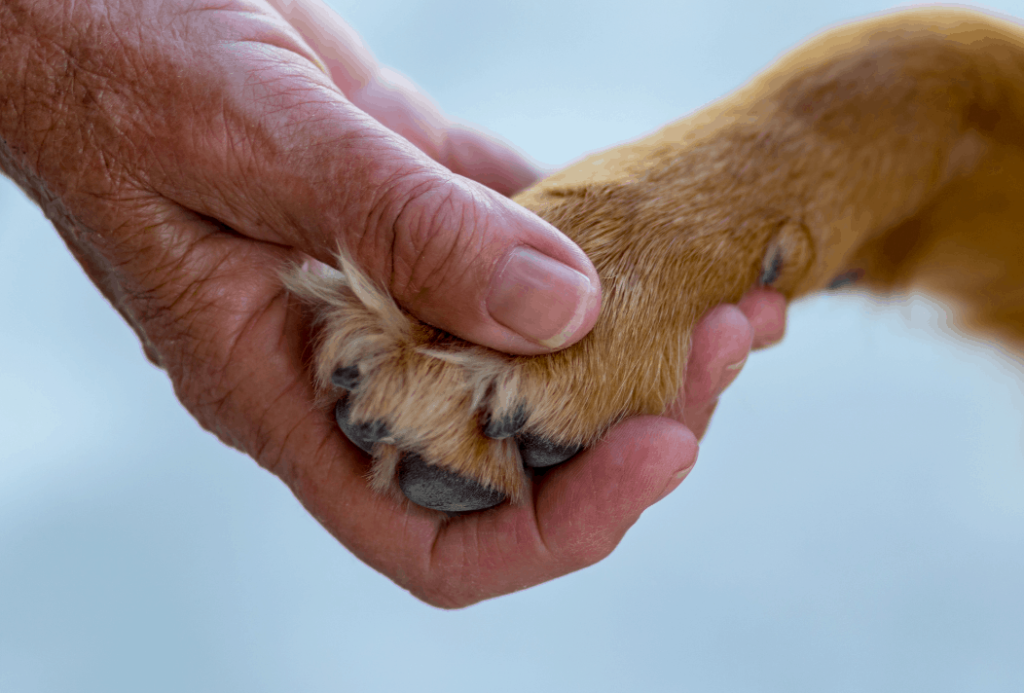Pet Euthanasia – How to Know When It’s Time
Many pet owners must eventually ask themselves this question, especially if their beloved dog or cat is now a senior or is dealing with a severe illness. Even for your veterinarian, pet euthanasia can be a difficult topic, and there is often never a right or wrong answer. In order to make an informed decision, one must know what it means to have a good quality of life versus a poor quality of life.
How can you as a pet owner know when your dog’s quality of life may never improve? Is it the same for every pet? What are your options for your pet’s care? In this article we discuss what it means for your dog to be suffering from poor quality of life and the decisions that come with that. Making the decision to consider euthanasia is different in each situation so what’s right for one pet and owner may not be right for another. It is helpful to understand some of the reasons why some owners are forced to consider it as means to help their dog.
How is poor quality of life defined?
In veterinary medicine, quality of life is the general well-being of a dog or cat. It is their overall sense of happiness and comfort on a regular basis, and it can also be defined by their interactions with you and other pets and family members.
Pets with poor quality of life tend to be less active or may even appear dull or depressed at times. They may not interact with you in ways that they used to. They may try to hide (especially cats), and they may eat or drink less, if at all. This will result in gradual weight loss, especially if clinical signs like vomiting and diarrhea appear. Pets with breathing problems also have a poor quality of life.
Signs of poor quality of life can appear quickly or can gradually develop. If you’re not sure about your own pet’s quality of life, ask your veterinarian for more information. They keep track of your pet’s body weight and vital signs, so if your pet is losing weight, his or her medical records can inform you. Your vet will also know how your pet appeared before an illness, and they can provide you with more objective data.
When to consider euthanasia
Every situation is different. Two pets could have the same illness, but their quality of life may be defined in different ways.
One of the best ways to determine your pet’s quality of life is to keep track of “good” days versus “bad” days on a calendar. Also, The Ohio State University has created a chart that can help you visualize your pet’s quality of life and helps you how to know when to consider euthanasia.

Pain
This is one of the most important factors in determining quality of life. Pets with moderate to severe pain will appear more depressed, and their relationship with you and family members will be significantly impacted. If your pet’s pain cannot be mitigated with medications and other aspects of integrative medicine (e.g., acupuncture, physical therapy, swim therapy, etc.), euthanasia may be recommended by your veterinarian.
Seizures
Dogs with epilepsy can develop seizures at an early age, and the frequency of seizures can be diminished with anti-seizure medications. Senior dogs who suddenly develop frequent and prolonged seizures may have a debilitating underlying illness like brain cancer. If seizures cannot be controlled, they can increase body temperature to the point that internal organs will begin to shut down.
Breathing problems
Heart disease is one of the most common causes of respiratory distress in dogs and cats. When heart disease progresses to congestive heart failure, your vet may prescribe medications to help with coughing and blood pressure. End-stage heart failure may result in uncontrollable coughing, weakness, exercise intolerance, and collapse. Overall quality of life can be greatly impacted by heart failure.
End-stage illness
Chronic diseases like kidney failure can be managed with treatments for many months or years. Eventually, these diseases can impact surrounding internal organs or cause issues that affect quality of life such as dehydration, anemia, vomiting, diarrhea, and weight loss. These issues can occur sporadically or in between good days, so it is often difficult to know when it is time to consider euthanasia. However, since we know that these diseases eventually will progress, euthanasia can be considered at any time.
Urination/defecation issues
Certain illnesses can result in uncontrollable urination or defecation such as trauma and extensive nerve injuries. Conversely, they can cause the inability to urinate or defecate without assistance. Even if your pet appears outwardly happy, these problems can significantly impact their quality of life.
Aggression
Sudden aggression can occur if there is brain disease such as cognitive dysfunction or cancer. Some dogs who have significant behavioral disorders can become so aggressive that they can injure family members or other animals. Even if these aggressive animals are young and otherwise healthy, it is a difficult but fair decision to consider euthanasia for the safety of others.
Stops eating/drinking
Even in some medical situations, dogs and cats will eat and drink normally. When your pet suddenly avoids their dishes, it can be very concerning. Dental disease and mild gastrointestinal upset are examples of manageable or treatable conditions, but if there is a severe or painful illness present, euthanasia may be recommended by your veterinarian.
Financial constraints
Not all medical problems are easy to fix. Some may require extensive hospitalization or even emergency surgery. These can be very expensive situations, and in certain scenarios, there may not be a guarantee for a desirable outcome. It is okay to consider euthanasia in these situations because it can be difficult to watch your pet deal with severe pain or discomfort for prolonged periods while waiting for medical therapy to help manage their clinical signs.
Limitations with palliative care
Palliative care is the management of chronic illnesses when there are no treatments available and the focus is on patient comfort. This typically involves the use of pain medications, wound care, supplemental fluid therapy, and elements of integrative medicine. If good quality of life cannot be maintained by palliative care alone, euthanasia is typically recommended.

There are no definitive rules for how to know when it’s your pet’s time
Because there are numerous factors to consider, it is best to talk to your veterinarian about your pet’s treatment outlook and quality of life. You can come to a decision together and determine the best way to care for your beloved furry family member.
The post Pet Euthanasia – How to Know When It’s Time appeared first on VetBabble.





Post a Comment